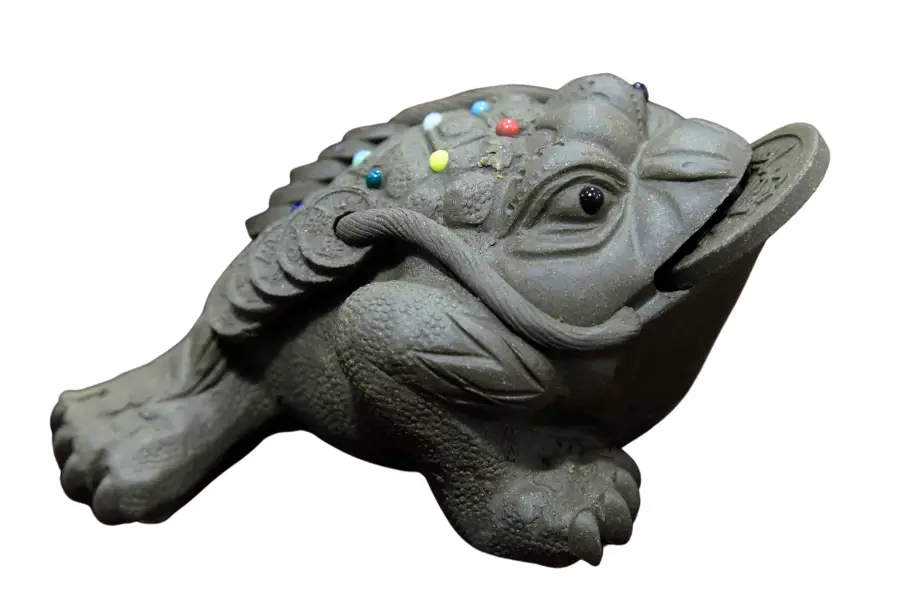Tea is more than just a comforting beverage; it’s a cultural treasure chest, holding stories, flavors, and traditions from around the world. There’s something deeply comforting in knowing that, irrespective of the cultures and continents that divide us, a simple cup of tea possesses the extraordinary power to unite us in a shared ritual of contemplation, connection, and heritage.
In this post we explore the remarkable diversity and significance of ceremonial tea traditions from around the globe that have graced humanity for centuries.
Champion Tea Enthusiasts Worldwide
As of 2016, the world’s top three tea-loving nations are as follows:
1. Turkey = 3.16 kg (6.96 lb) per capita
Turkey consistently ranks as one of the top tea-consuming countries per capita. Turkish tea, known as “çay,” is a staple beverage and is often consumed in small tulip-shaped glasses.
2. Ireland = 2.19 kg (4.83 lb) per capita
In Ireland, there is a strong tea culture. It’s common to offer tea to guests and is traditionally served strong and with milk.
3. United Kingdom = 1.94 kg (4.28 lb) per capita
Tea is an integral part of British culture, with “afternoon tea” being a well-known tradition. Britons often enjoy black tea with milk and sugar.
Tea Abstainers
While tea is a widely consumed beverage around the world, there are a few countries and religious groups where the consumption of tea is discouraged or less common. However, it’s essential to note that even in these places, you may still find individuals who choose to drink tea for various reasons. Here are some examples:
Mormonism (The Church of Jesus Christ of Latter-day Saints):
In adherence to the Word of Wisdom, a health code followed by Mormons, the consumption of black tea and coffee is discouraged. The Word of Wisdom, found in the Doctrine and Covenants, advises against “hot drinks,” which has been interpreted by church leaders to mean tea and coffee. The Word of Wisdom also encourages members to consume wholesome foods and avoid substances that are harmful to the body. While black tea and coffee are discouraged, herbal teas (tisanes) and other non-caffeinated beverages are generally considered acceptable. The Word of Wisdom is an integral part of Mormon beliefs and is followed by devout members.
Islam:
In Islam, there is no specific prohibition against tea, and it is generally considered permissible to consume. However, the interpretation of Islamic dietary guidelines can vary among individuals and cultures. In some Islamic countries, particularly in the Arabian Peninsula, coffee (Arabic coffee) is more commonly consumed than tea. This preference for coffee is deeply rooted in tradition, and Arabic coffee often holds a special place in social and cultural gatherings. While tea is still widely enjoyed in many Muslim-majority regions, individual practices regarding tea consumption can vary based on personal preferences and cultural influences.
Notably, during the holy month of Ramadan, tea and other foods and drinks are abstained from during daylight hours as part of the fasting observance.
What Is a Tea Ceremony
A tea ceremony, or tea ritual, is a structured practice involving the precise preparation, serving, and consumption of tea. These ceremonies are rooted in culture and history, featuring specific procedures, utensils, symbolism, and etiquette. They often emphasize mindfulness, respect, and the appreciation of tea’s flavor and aroma. Tea ceremonies can vary widely across cultures, offering unique ways to connect with tea and tradition.
12 Ceremonial Tea Traditions From Around The World
This is a world of tea, where a humble cup of leaves and hot water becomes a powerful force in bringing people together.
1. Moroccan Mint Tea: The Elixir of Hospitality

Symbolism of Mint:
Mint is not only added for flavor but also for its symbolic value. In Moroccan culture, mint represents purity and hospitality, making it an essential element of the tea.
Tea Rituals:
Moroccan Mint Tea isn’t just about the flavor; it’s also about the rituals. The pouring of tea from a height aerates the liquid and enhances the experience. The act of pouring itself is a performance.
Historical Significance:
Moroccan Mint Tea has been enjoyed for centuries and has historical ties to Berber and Arab traditions. It’s a testament to Morocco’s rich cultural heritage.
My Experience:
In my experience, mint tea was served in Morocco when negotiating the price of more expensive goods you wanted to buy in large markets, such as the Jemaa el-Fnaa market square, or in small villages. Mint tea was also typically served prior to booking a tour, especially if the trip details or price had not yet been set. Some of the best mint tea we had was at the famous Ksar, Ait-Ben-Haddou (Quarzazate province), when negotiating the purchase of a camel hair rug.
2. Indian Chai: The Bonding Brew

Regional Variations:
India is a diverse country, and the recipe for chai varies from region to region. In some areas, it might be spicier with more ginger, while in others, it could be milder with a stronger emphasis on cardamom.
Street Chai:
One of the most iconic experiences in India is sipping chai from street vendors. These chai wallahs create a bustling atmosphere and are an integral part of Indian street culture.
Chai Masala:
The blend of spices used in chai is called “chai masala.” Each family or tea vendor may have their secret recipe, passed down through generations.
3. Japanese Chanoyu: The Way of Tea

Origins:
Chanoyu, also known as the Way of Tea, traces its origins to Chinese Zen Buddhism. It was brought to Japan by Japanese monks who studied in Chinese monasteries. Over time, it evolved into a uniquely Japanese art form.
Influence of Wabi-Sabi:
Chanoyu embodies the principles of wabi-sabi, an aesthetic worldview that celebrates imperfection and transience. This philosophy is evident in the rustic and often irregular tea utensils used in the ceremony.
Tea Schools:
There are several major schools of tea ceremony in Japan, each with its own approach to Chanoyu. The Urasenke school, for instance, is located in Kyoto and is one of the most prominent and emphasizes simplicity and harmony. The Urasenke school, officially known as “Urasenke Chado,” was founded by Sen no Rikyu in the late 16th century. Sen no Rikyu is a legendary figure in the history of Chanoyu and is credited with shaping many aspects of the Japanese tea ceremony that we see today.
4. Tibetan Butter Tea: Nourishment in the Himalayas

Butter as Fuel:
In the harsh Himalayan environment, butter tea serves as a significant source of calories and nutrients. It’s often consumed in generous quantities to provide the energy needed for daily life.
Tea-Drinking Culture:
In Tibetan culture, tea-drinking is not just a daily routine; it’s a gesture of hospitality. Guests are welcomed with a steaming cup of butter tea, and it’s considered impolite to refuse.
Traditional Brewing:
Butter tea is traditionally prepared in a special churn called a “chandong.” The process involves vigorous stirring to create the frothy top layer.
5. Argentine Mate: A Social Tradition

Cultural Symbol:
Mate is deeply ingrained in Argentine culture and identity. Sharing mate is an essential part of social gatherings, from family picnics to office breaks.
Mate Rounds:
When sharing mate, it’s customary to form a “round.” The person who prepares the mate, known as the “cebador,” takes the first sip to ensure the quality, then passes it to others in the group.
Mate Etiquette:
There are specific rules regarding mate etiquette, such as not moving the bombilla (pronounced bawm-bee-yah), a type of metal straw, once it’s inserted or not saying “thank you” (muchas gracias) until you’ve had your fill of mate.
6. Turkish Cay: Bonding Over Tea

Culture:
Turkish tea, or cay, is an integral part of daily life in Turkey. It’s more than just a beverage; it’s a symbol of hospitality, friendship, and togetherness.
Tasting Notes:
Turkish tea is known for its robust flavor and deep red hue. It’s often enjoyed without milk but can be sweetened to taste. The traditional method of brewing involves a two-tiered teapot.
Tea Gardens:
In Turkey, you’ll find tea gardens or “cay bahcesi” where people gather to enjoy tea, play games, and engage in conversations. These places are hubs for social interaction.
7. Chinese Gongfu Cha: The Art of Skill

Tea Varieties:
Gongfu Cha, “Kung Fu Tea”, is versatile and can be used to brew various types of tea, from delicate green teas to heavily oxidized oolongs. The choice of tea leaves plays a crucial role in shaping the ceremony’s character.
Tea Pet:

In Gongfu Cha, it’s common to have a “tea pet,” a small figurine usually made of clay, placed on the tea tray. The tea is poured over the tea pet during each infusion, creating an evolving patina on the figurine.
Spiritual Connection:
Gongfu Cha isn’t just about the tea; it’s also a spiritual practice for some. The act of brewing and savoring tea becomes a meditative experience, fostering a deeper connection with nature and the self.
8. English Afternoon Tea: A Spot of Luxury

The Role of Anna, Duchess of Bedford:
The tradition of afternoon tea owes its popularity to Anna, the Duchess of Bedford, who introduced it in the early 19th century. She found the gap between lunch and dinner too long and started inviting friends for tea and snacks.
Tea Etiquette:
English afternoon tea has strict etiquette rules. For instance, one should stir their tea gently, without clinking the spoon against the cup, and the pinkie finger should never be extended while holding the cup.
Modern Variations:
While the classic afternoon tea includes sandwiches, scones, and pastries, modern variations may feature themed teas, gluten-free options, or even vegan versions to cater to diverse tastes.
9. American Iced Tea: The Cool Refreshment

Southern Tradition:
Iced tea is particularly popular in the southern United States and is often referred to as “sweet tea” due to its sweetened nature.
National Iced Tea Day:
In the United States, National Iced Tea Day is celebrated on June 10th (each year). It’s a day when people across the country enjoy different versions of this refreshing beverage.
Iced Tea Variations:
While sweet tea is a staple, there are various flavored iced teas available, including peach, raspberry, and mint, catering to diverse tastes.
10. Chinese Yum Cha: Dim Sum and Tea

Origins:
Yum Cha, also known as “tea brunch” or “dim sum,” is a Chinese tradition that dates back to the Silk Road era. It originated as a stopover for travelers to enjoy tea and snacks.
Components:
Yum Cha involves sipping tea while enjoying a variety of bite-sized dishes, such as dumplings, buns, and pastries. The tea served is often a classic Chinese variety like jasmine or oolong.
Social Gathering:
Yum Cha is not just a meal; it’s a social event. Families and friends gather at teahouses or dim sum restaurants to share these delectable treats and tea.
11. Korean Darye: The Tea Ceremony of Filial Piety

Philosophy:
Darye, the Korean tea ceremony, is deeply rooted in Confucianism and emphasizes filial piety. It’s an expression of respect for one’s ancestors and elders.
Preparation:
The ceremony involves meticulous preparation, including the choice of utensils and the careful brewing of green tea, typically Korean green tea called nokcha.
Silence and Contemplation:
Darye is characterized by silence and contemplation – participants focus on the act of brewing and serving tea as a form of meditation and respect for tradition.
12. Persian Chai: Welcoming Guests with Tea

Hospitality:
In Iran, welcoming guests with a steaming cup of Persian chai is a time-honored tradition. It’s a gesture of warmth and hospitality.
Ingredients:
Persian chai is typically made with black tea, often Ceylon or Earl Grey, and brewed to a strong and aromatic perfection. It’s served with sugar and often accompanied by sweets like baklava or dates.
Timeless Tradition:
The tradition of serving tea to guests in Iran has been passed down through generations and remains an integral part of Iranian culture.
The Best Water Filter Bottle We’ve Ever Used
Clearly Filtered | Stainless Steel Filter Bottles
We really love these filter bottles for keeping your drinks cool and contaminant free! They remove 99.9% of over 220 contaminants and use BPA-free plastics and double-walled stainless steel to produce some awesome looking designs with numerous bottle sizes for every situation. You can find them at Clearlyfiltered.com

